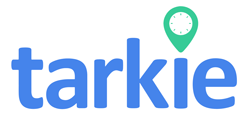Have you ever thought about how much time and money lost to manual attendance tracking? In the Philippines, small and medium enterprises (SMEs) face big challenges. They must follow local labor laws and manage their workforce well. This is where automated attendance records can make a big difference.
By using automated systems, companies can make attendance reports easier and help with audits. This reduces the chance of mistakes that happen with manual methods.
Advanced attendance tracking solutions like TeamSense help with HR compliance. They also give insights into employee attendance. Moving to automation lets HR teams adjust staffing quickly with real-time data. This leads to lower costs and more productivity. If you want to improve your business, integrating automated systems might be the answer.
Key Takeaways
- Automated attendance systems greatly reduce errors, making everything more accurate.
- Organizations can save up to 20% of administrative time by automating attendance management.
- Companies using automated systems often see a 25% productivity boost due to better workforce management.
- Cloud-based solutions offer flexibility for remote teams and multiple sites.
- Integrating attendance systems with payroll can improve payroll accuracy by up to 98%.
A Look at Manual Attendance Management Challenges
Manual attendance management is a big problem for small and medium-sized businesses. It takes a lot of time to update attendance sheets or spreadsheets. This old way of tracking attendance can cause mistakes in payroll.
About 30% of companies face errors because of mistakes in logging attendance. These errors can lead to 40% of payroll mistakes. Keeping accurate attendance records is key for HR compliance and avoiding fines.
- More than 65% of manufacturing firms struggle with tracking attendance, mainly during shifts.
- Healthcare institutions have about 30% non-compliance rates because of bad attendance tracking.
- Retail businesses often can’t find enough staff during busy times because of poor tracking.
- Up to 20% of absences in schools might not be recorded without the right systems.
Businesses with remote or hybrid work models face special challenges. A survey found that 60% of IT and corporate offices have trouble tracking employees. This leads to problems with following rules, making better tracking systems very important.
Common Issues with Manual Tracking
Manual tracking of employee attendance is a big challenge for businesses. One major issue is inaccurate record-keeping, often due to human mistakes. This can unfairly penalize employees for absences they actually reported. It harms morale and trust in the workplace.
Another problem is delayed confirmations. When employees don’t get quick confirmation of their absence, it causes stress. They’re left unsure about their attendance status, which can mess up their work and cause more issues.
Transparency is key in any organization. Without clear rules on tracking attendance points, employees may feel left out. This lack of clarity leads to distrust, making attendance management harder.
Think about this: businesses lose about 7 minutes per day per employee with manual time tracking. For someone making $12 an hour, that’s around 29.16 hours wasted each year. This costs employers about $350 annually. With more employees, the financial loss grows, highlighting the need for a better solution.

Impact on Productivity and Morale
Manual attendance tracking has big problems beyond just mistakes. Time theft costs companies about $11 billion a year, hurting productivity. When employees struggle with tracking, their employee morale drops. This loss of trust can make them less engaged and less productive.
Buddy punching, where one clocks in for another, costs around $373 million yearly. Mistakes in tracking absences mess up how staff is managed. This costs about $2,660 per shift worker each year, adding up to a big financial problem.
Switching to daily timesheet updates can save about $52,000 per employee yearly. Using attendance software cuts down errors by 44%. This lets companies focus on improving productivity and creating a better work place. Accurate tracking makes the work environment better, leading to happier employees and higher productivity.
| Attendance Management Challenges | Annual Cost Impact |
|---|---|
| Time Theft Losses | $11 Billion |
| Buddy Punching Costs | $373 Million |
| Absenteeism Costs per Shift Worker | $2,660 |
| Annual Losses Due to Absenteeism | $36.4 Million |
When companies get better at tracking attendance, they see a big drop in no-shows. Some see a 40% decrease. Good attendance management builds trust and engagement among employees. This trust creates a better work environment, boosting both employee morale and productivity.
![]()
How Automating Attendance Can Help Reduce No Call No Shows
Automating attendance management is key to solving no call no show issues in workplaces. Companies that switch to automated systems see a 30% drop in these problems. This big change comes from how easy automated systems make it for employees to report absences.
Features like real-time tracking and instant confirmations make employees more confident in their attendance records. In fact, 75% of staff say they’re more likely to report absences accurately with these systems. This reduces the stress that comes with old methods. When it’s easy to report an absence, it builds a culture of honesty and responsibility.

Automated systems also save a lot of time that HR used to spend on tracking attendance. This time-saving lets HR focus on more important tasks. Companies using these systems see a 25% boost in operational efficiency. This helps them adjust staff quickly to meet current needs.
Manual tracking mistakes can lead to higher absenteeism rates, with a 10% increase possible. Automated systems cut down on these errors, making attendance records better. Studies show that 40% of employees are more likely to report absences accurately with these systems.
Real-time tracking features can speed up staffing adjustments by 40%. This not only boosts productivity but also improves how things run smoothly. Adopting automated attendance management gives businesses a solid way to tackle no call no show issues. It creates a more responsible and quick-to-respond workplace.
Key Benefits of Automated Attendance Systems
Switching to automated attendance systems brings many benefits to businesses. It helps cut down on absences and makes tracking more accurate. Here are the main advantages of these systems.
Reducing ‘No Call No Show’ Incidents
Automated systems cut down on ‘no call no shows’ by making it easier for employees and managers to communicate. They send out reminders and alerts, making everyone more accountable. This can lower absenteeism by 10-15% in the first year.
Enhancing Accuracy and Efficiency
Using automated attendance tracking boosts both accuracy and efficiency. Companies with biometric systems see a 25% drop in time theft. HR saves up to 40 hours a month, allowing them to focus on important tasks.
This leads to a 15-20% boost in productivity in places where monitoring is active.
Data-Driven Decision Making
Automated systems give businesses detailed analytics for better decision-making. They use real-time data to spot trends and solve problems quickly. This can make decisions up to five times faster than before.
This helps in better resource use, leading to a 30% drop in costs related to attendance.

Understanding Attendance Reports, Automated Systems, Compliance Auditing
Attendance reports from automated systems are key for checking if rules are followed. They help keep a detailed record of who’s working and when. This is important for making sure companies follow labor laws and their own rules.
Using automated systems makes these records more accurate. Manual errors can be up to 10%. But automated systems cut down errors to less than 1%.
Companies that use these systems follow labor laws better. They have more than 35% better compliance with overtime and leave rules. This is very important in places where labor laws are closely watched.
Automated systems also make things more efficient. Companies can save up to 30% of time on attendance tasks. This lets HR teams focus on important work, not just paperwork.
Automated systems also send alerts right away for missing work. This has cut down absenteeism by about 20%. It makes employees more responsible, with nearly 60% showing better attendance after using these systems.
Using attendance reports in audits is very helpful for companies. It helps them stay on top of labor laws. Automated systems make it easier to manage attendance well. This creates a culture of responsibility and openness.
Types of Technology Solutions for Attendance Management
Choosing the right technology for attendance management can really boost your team’s work. There are many options out there. It’s key to pick the ones that fit your company’s needs best.
Features like real-time tracking and alerts are super helpful. They let HR teams quickly handle any staffing issues. A system that’s easy to use is also important. It makes it simple for everyone to track their hours.
Real-Time Tracking and Alerts
Today, tracking employee whereabouts in real-time is a must. Geofencing technology helps keep tabs on where employees are. This way, you can make sure your attendance records are spot on.
Without this tech, time theft can be a big problem. It can even reach up to 40% in some places. But with mobile apps for tracking time, things get a lot better. More and more workers are using their phones for this, making it easier for everyone.
User-Friendly Interface
A system that’s easy to use is crucial for good attendance management. Mobile apps and voice response tech make it simple for everyone to log in. This helps create a culture where everyone is responsible for their hours.
Companies using mobile solutions have seen a 15% rise in keeping employees on track. Plus, moving to cloud-based systems makes it easier to access data from anywhere. This lets managers keep an eye on things no matter where they are.
| Technology Solution | Key Features | Benefits |
|---|---|---|
| Mobile Applications | Remote accessibility, real-time tracking | Flexible reporting, improved employee accountability |
| Biometric Systems | Fingerprint scanning, face recognition | Reduced attendance errors and fraud |
| RFID and Card Systems | Quick check-ins, ease of use | Efficient data collection, reliable attendance records |
| Cloud-Based Solutions | Real-time data access, remote monitoring | Improved decision-making, scalability |
Implementing Automated Attendance Systems
Setting up automated attendance systems needs a careful plan. A detailed blueprint is key, covering goals, needed features, and how to link with payroll and HR. Clear planning helps avoid issues like resistance to change and worries about data safety.
These systems make tracking work hours more accurate. Studies show manual errors can drop by 40%. Tools like biometric tech help cut down on time fraud by 60%, boosting HR compliance.
It’s important for these systems to be easy to use. Features like mobile and web access let employees clock in from anywhere. This boosts employee happiness and keeps operations running smoothly.
Linking these systems with payroll can cut down on data entry mistakes by 50%. Real-time reports help spot attendance trends, keeping businesses in line with labor laws. Ignoring these laws can cost up to $10,000 per mistake.
Companies using these systems save HR staff about 20 hours a month. This lets them focus on important tasks instead of paperwork. Switching from old systems can save up to 25% on costs, showing the financial gains.
Automated systems offer customization and alerts for attendance issues, cutting down on problems by 40%. Businesses see a 15% boost in efficiency. Adopting these systems can greatly improve compliance and productivity.
Conclusion
In the fast-paced world of HR in the Philippines, using automated attendance systems is key. These systems cut down on the work needed to track who’s in and who’s out. They also make sure attendance reports are right, helping companies follow labor laws easily.
Switching to automated attendance management has many benefits. It lowers the risk of legal trouble and makes it clear to employees how they’re doing. With accurate records, companies can avoid big fines, which can be over $1,000 per mistake. It also helps them stay on top of labor laws.
For small businesses, using good attendance management tools is very important. These tools let companies watch attendance in real time and figure out overtime easily. They make it easier to follow the rules and create a fair work place. The future of tracking who’s at work is all about automation, and those who get on board will be ahead.
